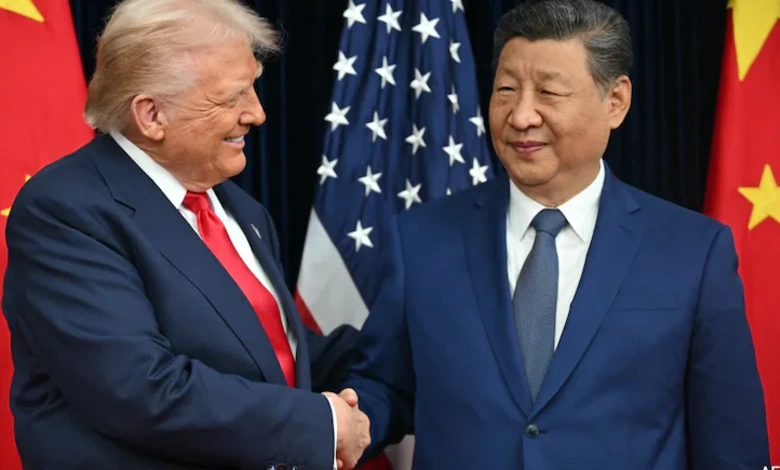Trump and Xi Hold Long-Awaited Summit in South Korea, Eyeing Trade Truce and Rare Earths Deal

Busan, South Korea – In a pivotal diplomatic encounter amid escalating economic frictions, U.S. President Donald Trump and Chinese President Xi Jinping convened for their first in-person meeting in six years on Thursday, marking a significant moment since Trump’s return to the White House.
The summit, held on the sidelines of international gatherings in Busan, comes as the two superpowers grapple with a renewed trade war that has strained global supply chains. Trump described the anticipated discussions as a “very successful meeting” with the “tough negotiator” Xi, expressing confidence in achieving a positive resolution. Xi, in turn, welcomed the opportunity, telling Trump it was “great to see” him and underscoring the potential for productive dialogue.
Ahead of the talks, representatives from Washington and Beijing announced they had forged a “consensus to address their respective concerns,” laying the groundwork with a preliminary “framework” agreement. Trump voiced optimism, predicting a “great outcome for the world” that could ease bilateral tensions.
At the core of the agenda are thorny issues spanning trade disputes, technological barriers, and access to critical minerals. A primary emphasis will fall on rare earth elements—vital components in the production of consumer electronics like smartphones and electric vehicles, as well as defense technologies such as fighter jets and drones. China, the world’s leading supplier, recently broadened export controls on these resources following the U.S. addition of several Chinese firms to its trade blacklist, prompting urgent calls from American officials for expanded access.
ALSO READ : Nicest Looking Guy : Trump Lauds PM Modi; Repeats India-Pak Ceasefire Claim
Trump is set to advocate for a conclusive agreement on transferring TikTok’s U.S. operations to a domestic owner, alongside commitments from China to resume large-scale purchases of American soybeans, bolstering support for U.S. agricultural communities that form a key constituency. On the Chinese side, negotiators are expected to press for relaxed curbs on high-end semiconductor imports, the lifting of tariffs linked to fentanyl precursors, and revisions to U.S. port charges affecting trade flows.
This rendezvous echoes the leaders’ last substantive exchange at the 2019 G20 Summit in Osaka, where they navigated early salvos in the trade conflict. There, Xi highlighted the 40th anniversary of U.S.-China diplomatic relations, pointing out how mutual cooperation had yielded benefits for both while discord had inflicted harm. He advocated for dialogue over confrontation, given the nations’ interlocking interests and shared opportunities, while firmly asserting China’s resolve to protect its sovereignty and dignity.
Trump, at that time, praised his rapport with Xi and affirmed the U.S. commitment to robust ties with China, free of animosity, and open to deeper collaboration. On economic matters, Xi reiterated the “mutual benefit and win-win” essence of their trade relationship, urging equitable consultations to bridge divides. Trump concurred, pledging no further tariffs on Chinese goods and stressing the need to manage disputes judiciously.
As the leaders delve into these high-stakes conversations, the world watches closely, hopeful that renewed engagement might stabilize an economic rivalry with far-reaching implications.




